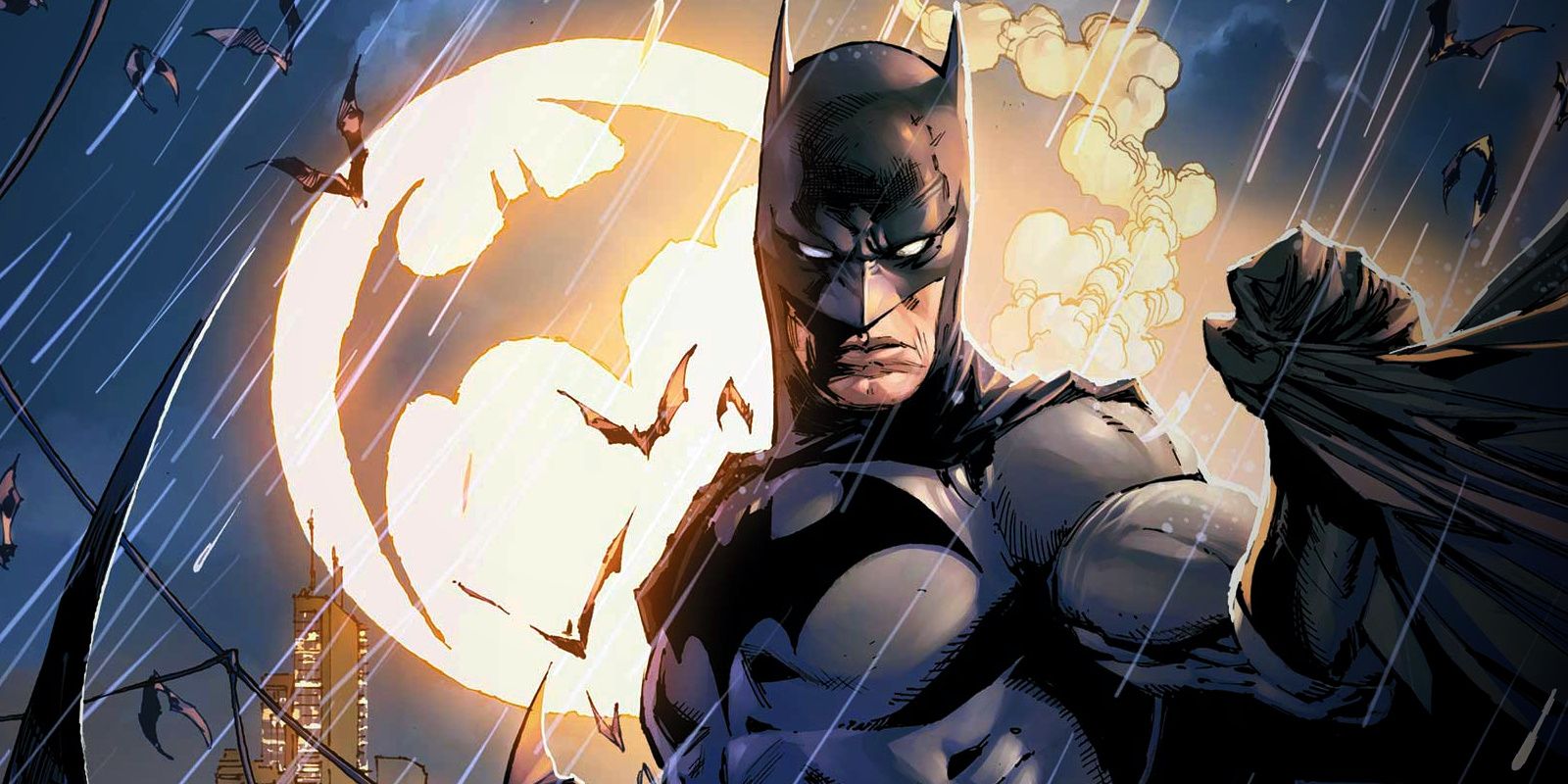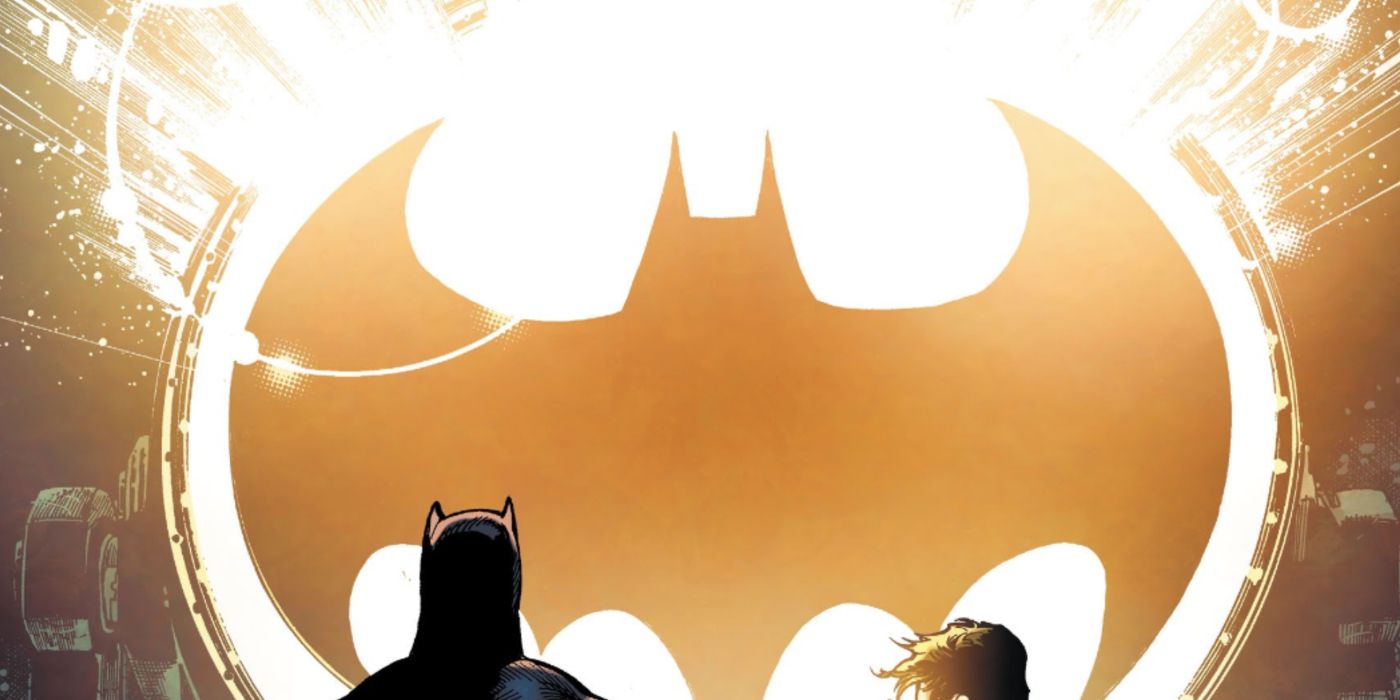This article contains spoilers for Detective Comics #1027.
This week's Detective Comics #1027 reveals the secret reason for Batman's Bat-Signal. The Bat-Signal first appeared in 1942's Detective Comics #60, and it's a simple enough device; a modified searchlight that sends the shadow of a bat into the skies over Gotham.
The Bat-Signal has appeared in most Batman adaptations, although it's often been switched up a little. In the 1949 Columbia serial, for example, it was a high-powered projector kept in Commissioner Gordon's office, and he simply pulled it over to his window every time he wanted to use it. Curiously enough, while there is a Bat-Signal in the Arrowverse, it seems to be viewed as a myth by anybody outside of Gotham City. When Cisco designed a "Flash-Signal," he claimed to be inspired by "some comic book" rather than the example of Batman himself. This week's Detective Comics #1027 is a special anniversary issue celebrating the Dark Knight, and the anthology book includes one short story that reveals a secret, forgotten reason for the Bat-Signal.
One short story, "As Always," is written by celebrated Batman scribe Scott Snyder and features stunning artwork by Ivan Reis. It reveals there are certain nights in Gotham that Batman and Commissioner Gordon refer to as "Black Roosters," an expression lifted from Chicken Little. Black Roosters are nights where life in Gotham seems bleak even by the city's standards, when criminals and madmen bring Gotham to the brink of collapse and the citizens are tempted to give up hope. These are the nights when Batman and the GCPD are pushed to the brink, and the people hunker in their homes, kept awake by the sounds of chaos. On those dark nights, Commissioner Gordon deliberately leaves the Bat-Signal on all night.
"That's the funny thing about the signal," Gordon reflects in a text-box. "People think it's an alarm, a warning that danger is coming, a call for help. 'It's to make them know we'll make it to morning, even if we make our own d*** light.' He can be quite the pointy-eared poet at times." When the threat is done, when the villains responsible for the Black Rooster nights have been defeated at last, Batman and Commissioner Gordon tend to stand sentinel besides the Bat-Signal for the rest of the night.
No doubt this developed over time, as the people of Gotham City became used to their costumed protector. At first the citizens saw the Bat-Signal only as a call for help, but little by little they would have found comfort in it, realizing it meant Batman was active and on the way. By now it has become a symbol of Batman's presence, a reminder the Dark Knight is standing guard over Gotham City, and he will guarantee they will arise in the morning.


